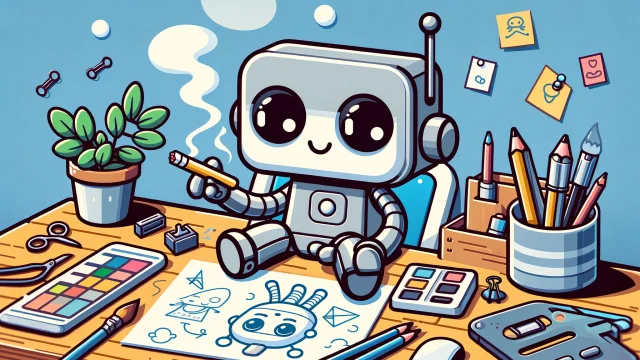Dragon Ball Key Animation: The Heart of the Series’ Visual Mastery
Dragon Ball Key Animation: The Heart of the Series’ Visual Mastery
Key animation plays a critical role in bringing the Dragon Ball universe to life. It is the foundation of the series’ dynamic fight scenes, emotional character moments, and iconic transformations. This article delves into the significance of key animation in Dragon Ball, exploring how it shapes the series’ aesthetic, highlights its best moments, and honors the talented animators behind its creation.
What Is Key Animation?
In animation production, key animation refers to the process of drawing the main, pivotal frames in a sequence. These drawings capture the most important poses or movements, providing the framework for in-between frames (or “in-betweens”) that create smooth motion. Key animators are responsible for defining the flow, intensity, and emotion of a scene, making their work essential for delivering memorable moments.
Key Animation in Dragon Ball
1. Defining the Action
- Dragon Ball is famous for its intense battles, and key animation ensures that every punch, kick, and energy blast is visually impactful.
- The fast-paced choreography and dramatic poses are meticulously crafted to convey a sense of speed and power.
2. Enhancing Transformations
- Transformations like Goku’s Super Saiyan awakening or Ultra Instinct form rely on key animation to emphasize the emotional weight and visual intensity of the moment.
3. Conveying Emotion
- From Gohan’s rage against Cell to Vegeta’s prideful sacrifices, key animation captures the subtle expressions and body language that make these scenes resonate with viewers.
Famous Key Animators in Dragon Ball
1. Tadayoshi Yamamuro
- Known for his sharp, clean style, Yamamuro contributed to some of Dragon Ball Z’s most iconic moments, including Goku’s first Super Saiyan transformation.
2. Naotoshi Shida
- A standout animator whose fluid and dynamic sequences are celebrated in Dragon Ball Super.
- His work on the Goku vs. Jiren fight in the Tournament of Power is widely regarded as a masterpiece.
3. Shingo Araki
- Known for his contributions during the early Dragon Ball episodes, Araki’s character designs and key animations defined the series’ foundational aesthetic.
4. Yuya Takahashi
- A fan-favorite for his retro-inspired, detailed style, Takahashi’s key animation has been praised in modern installments like Dragon Ball Super: Broly.
Key Animation Highlights in the Franchise
1. Goku vs. Frieza (Namek Saga, Dragon Ball Z)
- The climactic battle between Goku and Frieza features some of the most detailed key animations, capturing the tension and intensity of their clash.
2. Gohan’s Super Saiyan 2 Transformation (Cell Games Saga)
- The emotional weight of Gohan’s transformation is heightened by meticulously crafted key frames showcasing his rage and determination.
3. Vegeta’s Final Atonement (Majin Buu Saga)
- The key animation emphasizes Vegeta’s resolve and the heartbreaking nature of his sacrifice.
4. Broly’s Fury (Dragon Ball Super: Broly)
- The film’s cutting-edge key animation brings Broly’s raw power to life with fluid motion and explosive energy effects.
5. Goku vs. Jiren (Dragon Ball Super)
- The Ultra Instinct battles are a testament to the power of key animation, blending dynamic movement with breathtaking visual effects.
The Evolution of Key Animation in Dragon Ball
1. Classic Era (Dragon Ball)
- The original Dragon Ball series focused on hand-drawn key frames, emphasizing charm and humor over intense battles.
2. Dragon Ball Z
- The shift to larger-scale battles required more intricate key animations to convey the scale and impact of fights.
3. Modern Era (Dragon Ball Super)
- Advances in digital technology allowed animators to combine traditional techniques with CGI, resulting in smoother motion and more detailed effects.
4. Movies and Specials
- Films like Dragon Ball Super: Broly showcase some of the franchise’s best key animation, with high budgets allowing animators to push their craft to new heights.
The Importance of Key Animation in Storytelling
Key animation is not just about action—it’s about storytelling.
- Emotionally Resonant Moments: Scenes like Goku holding Gohan during the Cell Saga rely on expressive key frames to connect with the audience.
- World-Building: The detailed animation of landscapes, battle damage, and character interactions enriches the Dragon Ball universe.
Challenges in Key Animation
- Consistency
- Maintaining consistent character designs and proportions across episodes and movies is a significant challenge.
- High Expectations
- Fans of Dragon Ball expect high-quality animation, especially during pivotal scenes, putting immense pressure on animators.
- Time Constraints
- Tight production schedules often push animators to their limits, resulting in occasional dips in quality for less crucial episodes.
Legacy of Dragon Ball Key Animation
The key animation in Dragon Ball has influenced countless other anime, setting a high standard for action choreography and visual storytelling. It has inspired a new generation of animators who continue to celebrate the series’ legacy through modern adaptations and fan creations.
Conclusion
Key animation is the heartbeat of Dragon Ball, bringing its legendary battles and heartfelt moments to life. From the classic hand-drawn frames of Dragon Ball Z to the cutting-edge techniques in Dragon Ball Super, the dedication and artistry of animators have made the series an enduring masterpiece. For fans and animators alike, key animation remains a vital element of Dragon Ball’s timeless appeal.

